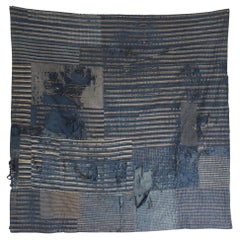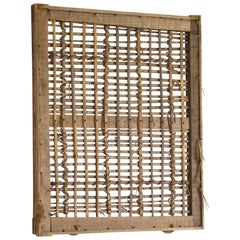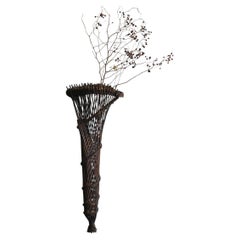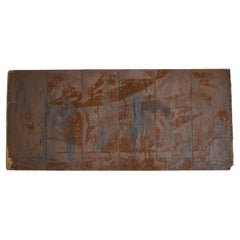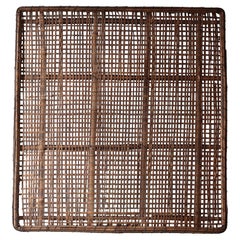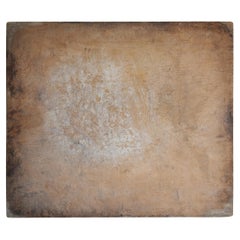Japan - Wall Decorations
Mid-19th Century Japanese Edo Antique Japan - Wall Decorations
Fabric
Early 20th Century Japanese Meiji Japan - Wall Decorations
Bamboo, Cedar
Late 19th Century Japanese Taisho Antique Japan - Wall Decorations
Bamboo
Mid-20th Century Japanese Showa Japan - Wall Decorations
Iron
Late 19th Century Japanese Meiji Antique Japan - Wall Decorations
Bamboo
1870s Japanese Meiji Antique Japan - Wall Decorations
Cedar
Late 19th Century Japanese Meiji Antique Japan - Wall Decorations
Cedar, Wood, Pine
Early 20th Century Japanese Showa Japan - Wall Decorations
Cypress
Early 20th Century Japanese Showa Japan - Wall Decorations
Gold Leaf
Late 19th Century Japanese Meiji Antique Japan - Wall Decorations
Silk
Early 19th Century Japanese Edo Antique Japan - Wall Decorations
Gold Leaf
20th Century Japanese Showa Japan - Wall Decorations
Tin
Late 17th Century Japanese Edo Antique Japan - Wall Decorations
Gold Leaf
Mid-18th Century Japanese Edo Antique Japan - Wall Decorations
Gold Leaf
Early 20th Century Japanese Meiji Japan - Wall Decorations
Paper
Late 19th Century Japanese Edo Antique Japan - Wall Decorations
Beech
Mid-19th Century Asian Edo Antique Japan - Wall Decorations
Silk
1890s Japanese Meiji Antique Japan - Wall Decorations
Gold Leaf
Late 19th Century Japanese Edo Antique Japan - Wall Decorations
Paper
1830s Japanese Edo Antique Japan - Wall Decorations
Silk
Late 19th Century Japanese Meiji Antique Japan - Wall Decorations
Wood
Early 19th Century Japanese Edo Antique Japan - Wall Decorations
Wood, Silk
2010s Japanese Japonisme Japan - Wall Decorations
Paper
Early 20th Century Japanese Meiji Japan - Wall Decorations
Bamboo, Cedar
2010s Japanese Organic Modern Japan - Wall Decorations
Canvas, Thread, Straw
Early 20th Century Japanese Showa Japan - Wall Decorations
Gold Leaf
20th Century Japanese Edo Japan - Wall Decorations
Pottery
20th Century Japanese Showa Japan - Wall Decorations
Wood
Late 19th Century Japanese Meiji Antique Japan - Wall Decorations
Wood, Paper
Mid-17th Century Japanese Edo Antique Japan - Wall Decorations
Silk, Wood, Paper
1910s Japanese Japonisme Vintage Japan - Wall Decorations
Canvas, Silk
Early 20th Century Japanese Showa Japan - Wall Decorations
Cotton
Mid-20th Century Asian Showa Japan - Wall Decorations
Silver Leaf
1970s Japanese Japonisme Vintage Japan - Wall Decorations
Canvas, Silk
Mid-18th Century Japanese Edo Antique Japan - Wall Decorations
Gold Leaf
Mid-19th Century Asian Edo Antique Japan - Wall Decorations
Silk
Early 20th Century Japanese Meiji Japan - Wall Decorations
Pine
Mid-19th Century Asian Edo Antique Japan - Wall Decorations
Gold Leaf
Late 17th Century Japanese Edo Antique Japan - Wall Decorations
Gold Leaf
Early 20th Century Japanese Taisho Japan - Wall Decorations
Gold Leaf
Early 20th Century French Industrial Japan - Wall Decorations
Iron
Early 20th Century Japanese Meiji Japan - Wall Decorations
Bamboo
20th Century Japanese Showa Japan - Wall Decorations
Cedar, Lacquer
21st Century and Contemporary Japanese Japan - Wall Decorations
Silk, Brocade
1860s Japanese Edo Antique Japan - Wall Decorations
Silk
1910s Japanese Taisho Vintage Japan - Wall Decorations
Wood, Silk
20th Century Japanese Taisho Japan - Wall Decorations
Cedar
Early 20th Century Uzbek Kilim Japan - Wall Decorations
Silk, Natural Fiber, Organic Material
Mid-19th Century Japanese Edo Antique Japan - Wall Decorations
Gold Leaf
Mid-20th Century Japanese Showa Japan - Wall Decorations
Cedar
1920s Japanese Taisho Vintage Japan - Wall Decorations
Wood, Silk
1640s Japanese Edo Antique Japan - Wall Decorations
Wood, Paper
1920s Japanese Taisho Vintage Japan - Wall Decorations
Wood, Silk
Mid-19th Century Asian Edo Antique Japan - Wall Decorations
Silk
Late 19th Century Japanese Ming Antique Japan - Wall Decorations
Silk
2010s Japanese Japonisme Japan - Wall Decorations
Brass
Mid-20th Century Japanese Showa Japan - Wall Decorations
Wood
20th Century Japanese Taisho Japan - Wall Decorations
Wood
Early 18th Century Asian Edo Antique Japan - Wall Decorations
Gold Leaf
1690s Japanese Edo Antique Japan - Wall Decorations
Gold Leaf
Read More
Whether Painted or Papered, Muraled Walls Make Bold Statements in the Home
The ancient practice of covering walls in artistic scenery is back.
In Francks Deceus’s ‘Mumbo Jumbo #5,’ the Black Experience Is . . . Complicated
Despite the obstacles, the piece’s protagonist navigates the chaos without losing his humanity.
12 Floral-Accented Rooms with a Handmade, Folkloric Feel
Who needs a flower garden? Just use your imagination — and some beautifully patterned wallpaper or fabric — to bring the outdoors in.
This Wolf Kahn Pastel Is the Epitome of Beauty at Its Most Essential
A longtime admirer of Kahn’s work, 1stDibs editorial director Anthony Barzilay Freund explores why it’s relevant now more than ever.
Why Jules Chéret Was the King of the Modern Poster
The streets of fin-de-siècle Paris were set aglow with colorful poster ads, thanks to the printing techniques invented by Jules Chéret. Now, the Milwaukee Art Museum is celebrating this undersung talent in America's first solo show dedicated his exuberant works.
Anna Condo’s Multifaceted Career Spans Film, Photography and NFTs
From her historic Manhattan townhouse, the talented creator and curator of 1stDibs' latest NFT exhibition tells us about the art in her home and how she got involved with cryptoart.
How Keith Rivers Went from NFL Linebacker to Blue-Chip Art Aficionado
The former football player is as serious about becoming a great contemporary-art patron as he once was about making tackles. Here, Rivers tells us how he got the collecting bug and how his tastes have evolved over the years.
More Than Ever, the Female Design Council Is Embracing Funked-Up Creativity
The organization's "Womxn’s History Month" collection celebrates female-identified creators pushing the boundaries of technique and material.
